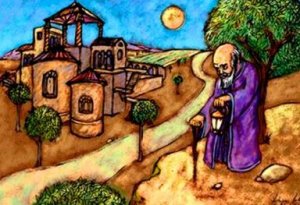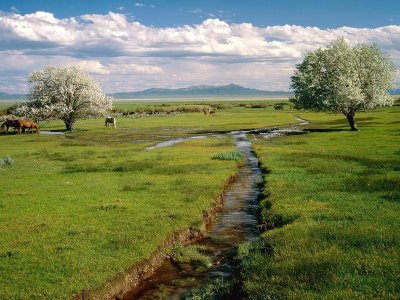The Seeker and True Existence

Today I’d like to share with you a beautiful tale “The Seeker”, written by Jorge Bucay, in which he invites us to reflect on how to live a full life.
This is the story of a person who we could call a seeker. Keeping in mind that a seeker is someone who undergoes a search and whose intention is to discover “something.“ It doesn’t necessarily have to be about someone who “finds” something.
It’s also not about a person who knows or is conscious of what he’s looking for. We’re simply talking about those people whose lives are a beautiful search.
Learning to live and feel every moment of our vital time is what constitutes true existence.
The story begins on an ordinary day when the seeker felt that he should go towards Kammir city. He had learned to pay close attention to these feelings that came from an unknown place inside him. So he left everything behind and took off.

After walking for two days through dusty paths, he could make Kammir out in the distance. Just before reaching the town, a hill to the right of the path caught his attention. It was covered in beautiful greenery and had many trees, birds and lovely flowers.
It was completely surrounded by a small polished wooden fence. A bronze gate beckoned him to enter. Suddenly, he seemed to forget the town and succumbed to the temptation of resting for a moment in this place.
The seeker crossed the threshold and slowly started to walk through the white stones that where randomly scattered among the trees. He let his eyes wander like those of a true seeker. Maybe that’s how he discovered the inscription on one of the stones: “Abedul Tare, lived 8 years, 6 months, 2 weeks and 3 days”.
“Sweet it is to a man in his painful mourning,
when the persistent torment terrifies him,
to say mockingly to the miserable earth:
“That is my homeland,” and point to the sky.”Hector Gaitan
He was a bit overwhelmed when he noticed that the stone wasn’t just a stone. It was a tombstone. His heart ached to think that a child of such young age was buried there.
Looking around him, he noticed that the stone next to it also had an inscription. He leaned closer to read it, and it said “Llamar Kalib, lived 5 years 8 months and 3 weeks”.
The seeker felt terribly shocked. This beautiful place was a cemetery and each stone was a tombstone. They all had similar inscriptions: a name and the exact lifetime of the deceased.
But what filled him with dread was the realization that the one who’d lived the longest was barely over 11 years old. Overcome with a terrible sorrow, he sat down and started to weep.

The keeper of the cemetery was strolling by and approached the man. He watched him cry for a while in silence, and then asked if he was crying over a relative.
– “Not a relative,” said the seeker, “What’s wrong with this town? What’s so terrible in this city? Why are there so many dead kids in this place? What’s the horrible curse on these people that forced them to build a cemetery full of children?”
The old man smiled and replied:
– “Calm down. There’s no curse. We have an old custom here. I’ll tell you: when a youngster turns 15, their parents give them a notebook, like this one around my neck. It’s a tradition of ours that from that point forward, every time we truly enjoy something, we open the notebook and write down what we enjoyed on the left, and how long it lasted on the right.
Met your girlfriend and fell in love with her? How long did that enormous passion and the pleasure of knowing her last? And the excitement of your first kiss, how long did it last? The pregnancy and birth of your first child? And your most awaited trip? And reuniting with a brother who had been away in a foreign land? How long did the enjoyment of these situations last? Hours? Days?
Like so, we write down every moment in our notebooks. When someone dies, it’s our custom to open their notebook and add up their time of enjoyment to write it on their grave. Because that is, to us, the length of time they truly lived.”
This text is provided for informational purposes only and does not replace consultation with a professional. If in doubt, consult your specialist.








